
Characterization of Mississippian Osage Chat in South-Central
Kansas
Kansas Geological Survey
Open-file Report 2002-50

|
|
Kansas Geological Survey Open-file Report 2002-50 |
The Glick Field produces from a 34 foot tripolitic "Chat" section that has microporosity of 28-30 percent from log analysis and 38 percent by core analysis, a water saturation of 45-60 percent, and an average permeability of 32 millidarcies by core analysis. Most of the porosity is not visible without significant magnification. The Chat in the Glick Field is unusual in that the section is almost totally chert. The Movable Oil Plot is a great indicator of the effective porosity in the Glick Field. The very high bulk volume water (0.13-0.19) indicates that the reservoir has significant microporosity.
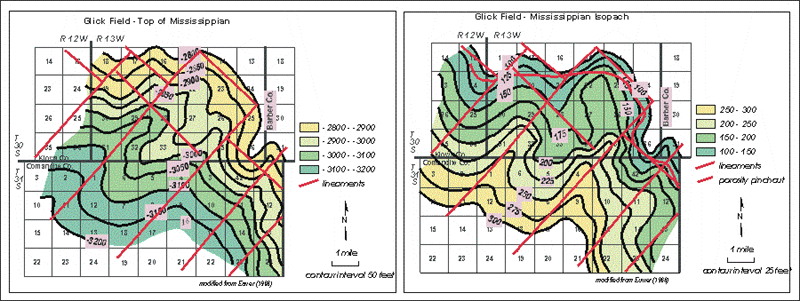
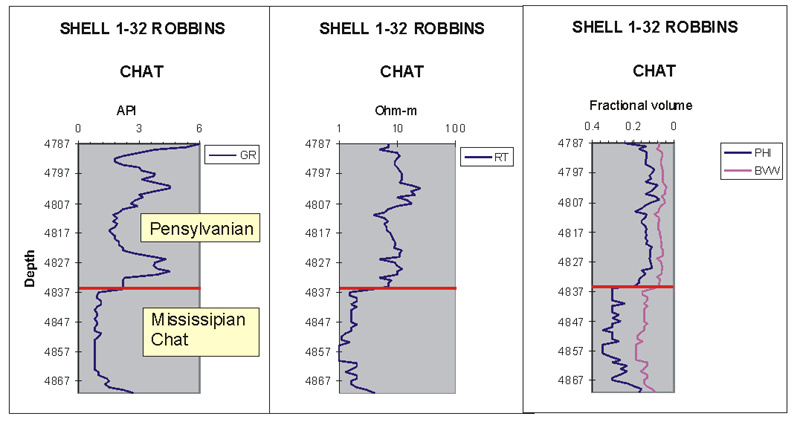
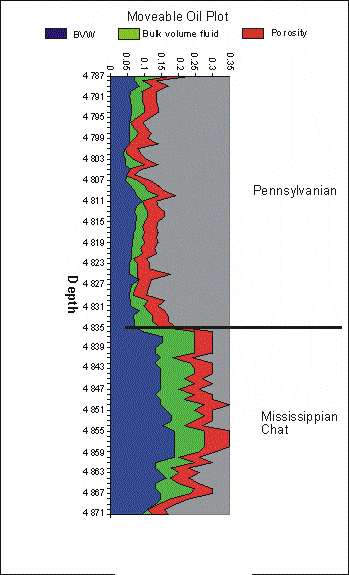
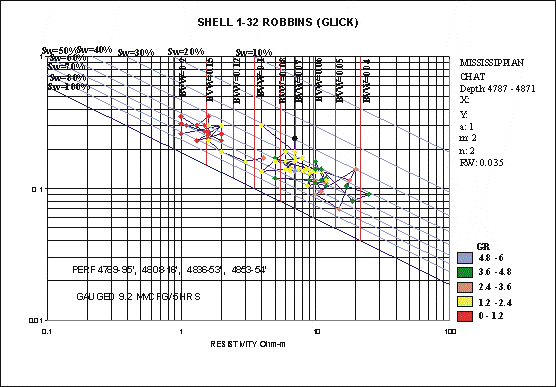
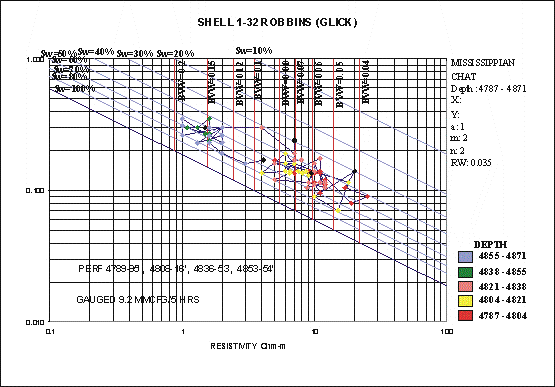
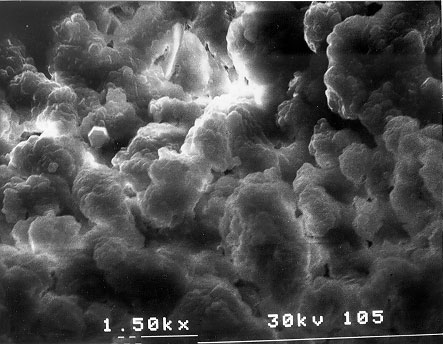 |
| SEM photograph of chat sample from Robbins #1-36 in Glick Field at 4856 ft showing corroded quartz crystals and microporosity. Scale bar is 10 microns. |
Extensively studied and the properties summarized by Rogers et al. (1995), Montgomery et al. (1998), and Duren (1960)
Located 45 km northwest of Hardtner Field, situated near northwest-trending lineament "B”
88 km2 in size with chat thickness ranging from 0 to 24 m
Erosional truncation of chat along the updip northern and eastern ends of this field juxtapose thick porous chat alongside dense lower Mississippian carbonates, impermeable shale, and dense Viola Limestone; Chat lies immediately below the sub-Pennsylvanian unconformity
Internal correlations within the Mississippian suggest up to 23 m of section is lost along the updip margins of the field. Examination of maps of structure and thickness of the Mississippian originally prepared by Euwer (1968) suggest a series of minor northeast-trending lineaments across the field in a pattern similar to Spivey-Grabs and Hardtner Field
Thickest and most porous chert reservoir for the chat of south-central Kansas
Porosities range up to 50% and thick intervals of porosity greater than 40% are present
Core pieces and the log signature of the Shell #1-32 Robbins suggest a thick complete cycle similar to cycle B in the Tjaden 1-A WIW of Spivey-Grabs Field
Rogers et al. (1995) describe five chert facies similar to the chert-rich facies outlined in current study: 1) silicified skeletal wackestone-packstone; 2) spiculitic microporous chert; 3) brecciated spiculitic chert; 4) nodular spiculitic chert; and 5) relatively homogeneous microcrystalline chert.
|
|